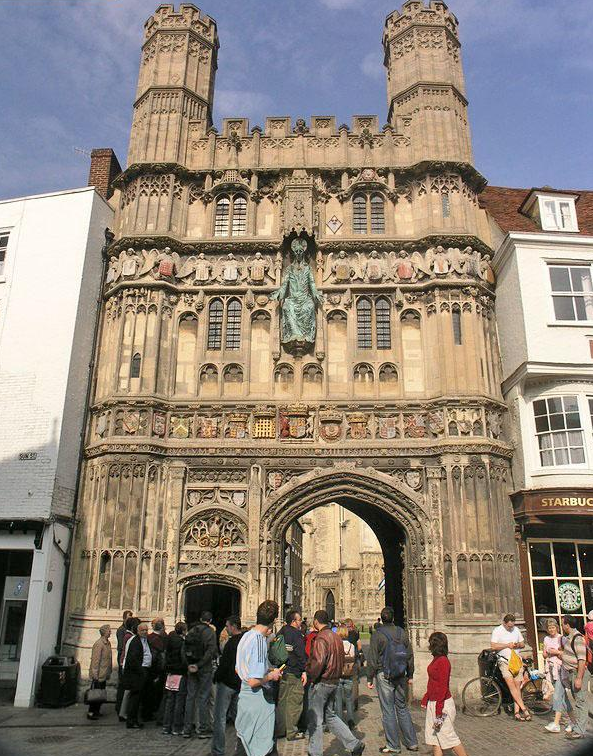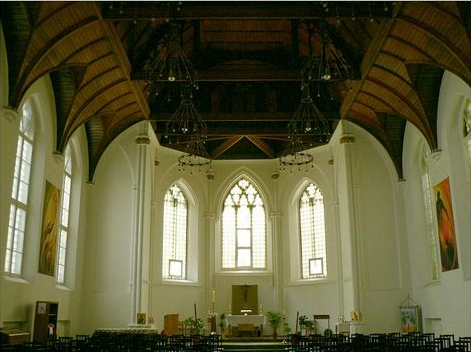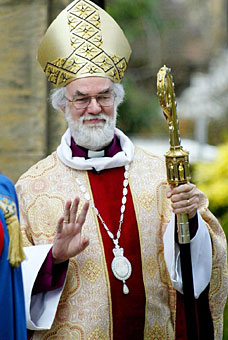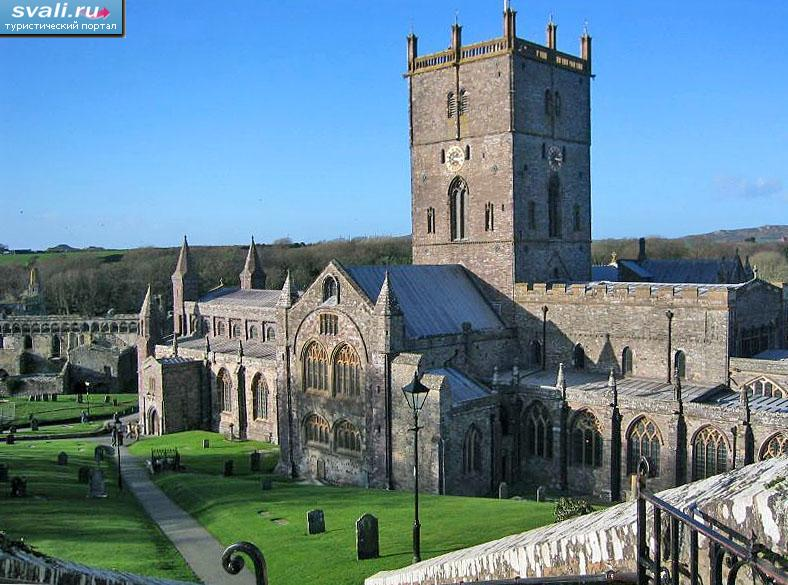
- •A Country Across the Channel
- •I. Fill in the blanks with the correct words.
- •II. Complete the sentences with the best answer (a, b or c).
- •III. Are the statements true or false? Correct the false statements.
- •IV. Answer the questions.
- •V. Draw a sketch-map of the British Isles and mark in the following.
- •Britain-an Island, or a Peninsula?
- •I. Fill in the blanks with the correct words.
- •II Complete the sentences with the best answer (a, b or c).
- •III. Are the statements true or false? Correct the false statements.
- •IV. Answer the questions.
- •V. Do you remember?
- •The Face of Britain
- •II. Complete the sentences with the best answer (a, b or c).
- •III. Are the statements true or false? Correct the false statements.
- •IV. Answer the questions.
- •V. Draw a sketch map of the British Isles and include
- •Climate and Weather
- •I. Fill in the blanks with the correct words.
- •II. Complete the sentences with the best answer (a, b or c).
- •III. Are the statements true or false? Correct the false statements.
- •IV. Answer the questions.
- •Mineral Wealth
- •I. Fill in the blanks with the correct words.
- •II. Complete the sentences with the best answer (a, b or c).
- •III. Are the statements true or false? Correct the false statements.
- •IV. Answer the questions.
- •Who Are the British? (I) Ancient and Roman Britain
- •I. Fill in the blanks with the correct words.
- •II. Complete the sentences with the best answer (a, b or c).
- •III. Are the statements true or false? Correct the false statements.
- •IV. Answer the questions.
- •Who Are the British ? (II) t he Anglo-Saxons, Danes and Normans
- •I. Fill in the blanks with the correct words.
- •II. Complete the sentences with the best answer (a, b or c).
- •III. Are the statements true or false? Correct the false statements.
- •IV. Answer the questions.
- •Who Are the British? (Ill) The Irish
- •I. Fill in the blanks with the correct words.
- •II. Complete the sentences with the best answer (a, b or c).
- •III. Are the statements true or false? Correct the false statements.
- •IV. Answer the questions.
- •Stonehenge and Avebury
- •I. Fill in the blanks with the correct words.
- •III. Are the statements true or false? Correct the false statements.
- •IV. Answer the questions.
- •V. Explain the following
- •I. Fill in the blanks with the correct words.
- •II. Complete the sentences with the best answer (a, b or c).
- •III. Are the statements true or false? Correct the false statements.
- •IV. Answer the questions.
- •V. Do you remember?
- •Northern Ireland - the Land of the Giant's Causeway
- •I. Fill in the blanks with the correct words.
- •II. Complete the sentences with the best answer (a, b or c).
- •III. Are the statements true or false? Correct the false statements.
- •IV. Answer the Questions.
- •V. Explain:
- •Great Britain - a Constitutional Monarchy
- •I. Fill in the blanks with the correct words.
- •II. Complete the sentences with the best answer (a, bore).
- •III. Are the statements true or false? Correct the false statements.
- •IV. Answer the questions.
- •Mother of Parliaments
- •I. Fill in the blanks with the correct words.
- •II. Complete the sentences with the best answer (a, b or c).
- •III. Are the statements true or false? Correct the false statements.
- •IV. Answer the questions.
- •The Party System and the Government
- •I. Fill in the blanks with the correct words.
- •II. Complete the sentences with the best answer (a, b or c).
- •III. Are the statements true or false? Correct the false statements.
- •IV. Answer the questions.
- •The Press
- •I. Fill in the blanks with the correct words.
- •II. Complete the sentences with the best answer (a, b or c).
- •III Are the statements true or false? Correct the false statements.
- •IV. Answer the questions.
- •Radio and Television
- •I. Fill in the blanks with the correct words.
- •II. Complete the sentences with the best answer (a, b or c).
- •III. Are the statements true or false? Correct the false statements.
- •IV. Answer the questions.
- •The School Education
- •I. Fill in the blanks with the correct words.
- •II. Complete the sentences with the best answer (a, b or c).
- •III. Are the statements true or false? Correct the false statements.
- •IV. Answer the questions.
- •The Public Schools
- •I. Fill in the blanks with the correct words.
- •II. Complete the sentences with the best answer (a, b or c).
- •III. Are the statements true or false? Correct the false statements.
- •IV. Answer the questions.
- •The Economy. The South
- •I. Fill in the blanks with the correct words.
- •II. Complete the sentences with the best answer (a, b or c).
- •III. Are the statements true or false? Correct the false statements.
- •IV. Answer the questions.
- •The Regions of Britain
- •I. Fill in the blanks with the correct words.
- •III. Are the statements true or false? Correct the false statements.
- •IV. Answer the questions.
- •V. Do you remember?
- •Transport
- •I. Fill in the blanks with the correct words.
- •II. Complete the sentences with the best answer (a, b or c).
- •III. Are the statements true or false? Correct the false statements.
- •IV. Answer the questions.
- •Agriculture
- •I. Fill in the blanks with the correct words.
- •II. Complete the sentences with the best answer (a, b or c).
- •III. Are the statements true or false? Correct the false statements.
- •IV. Answer the questions.
- •Food and Meals
- •I. Fill in the blanks with the correct words.
- •III. Are the statements true or false? Correct the false statements.
- •IV. Answer the questions.
- •Some National Traits
- •I. Fill in the blanks with the correct words.
- •II. Complete the sentences with the best answer (a, b or c).
- •III. Are the statements true or false? Correct the false statements.
- •IV. Answer the questions.
- •The Church In Modern Life
- •II. Complete the sentences with the best answer (a, b or c).
- •III. Are the statements true or false? Correct the false statements.
- •IV. Answer the questions.
- •The British In Their Private Life
- •I. Fill in the blanks with the correct words.
- •III. Are the statements true or false? Correct the false statements.
- •IV. Answer the questions.
- •V. Do you remember?
- •English Gardens and Gardeners
- •I. Fill in the blanks with the correct words.
- •III. Are the statements true or false? Correct the false statements.
- •IV. Answer the questions.
- •Leisure and Sports
- •I. Fill in the blanks with the correct words.
- •III. Are the statements true or false? Correct the false statements.
- •IV. Answer the questions.
- •King Arthur
- •I. Fill in the blanks with the correct words.
- •II. Complete the sentences with the best answer (a, b or c).
- •III. Are the statements true or false? Correct the false statements.
- •IV. Answer the questions.
- •V. Do you remember?
- •"My Bonnie Lies Over the Ocean... "
- •I. Fill in the blanks with the correct words.
- •III. Are the statements true or false? Correct the false statements.
- •IV. Answer the questions.
- •Canterbury Cathedral and Geoffrey Chaucer - the Great English Story-Teller
- •I. Fill in the blanks with the correct words.
- •II. Complete the sentences with the best answer (a, b or c).
- •III. Are the statements true or false? Correct the false statements.
- •IV. Answer the questions.
- •Shakespeare and Shakespeareland
- •I. Fill in the blanks with the correct words.
- •III. Are the statements true or false? Correct the false statements.
- •IV. Answer the questions.
- •Britain's Great Hero
- •I. Fill in the blanks with the correct words.
- •II. Complete the sentences with the best answer (a, b or c).
- •III. Are the statements true or false? Correct the false statements.
- •IV. Answer the questions.
- •"The Lady With the Lamp"
- •I. Fill in the blanks with the correct words.
- •II. Complete the sentences with the best answer (a, b or c).
- •III. Are the statements true or false? Correct the false statements.
- •IV. Answer the questions.
- •Museums and Other Treasures
- •I. Fill in the blanks with the correct words.
- •II. Complete the sentences with the best answer (a, h or c).
- •III. Are the statements true or false? Correct the false statements.
- •IV. Answer the questions.
- •Chronological outline
- •Kings and queens of england from alfred
- •British prime ministers and governments
IV. Answer the questions.
1. What factors contributed to making a distinctive British character?
2. Give some comment on the actual situation of Great Britain in the contemporary world.
3."The British have some very rigid codes of behaviour". What are these codes?
4. Why are the British considered to be conservative?
5. What is the English countryside to many people?
6. Why do the British people think that it is in the country that they are most at home?
7. Describe the British village.
8. How do the British people spend their holidays?
9. How do the young people spend their weekends?
10. How do the British spend Saturdays and Sundays?
Points for discussion
1. The roots of the British national traits.
2. The British people at the weekend.
3. How do you spend your holidays and weekends?
The Church In Modern Life
R eligion
has always played an important part in the national way of life and
this is still true today. There is complete religious freedom in the
United Kingdom. Churches and religious societies may own property,
conduct schools, and propagate their beliefs in speech and writing.
eligion
has always played an important part in the national way of life and
this is still true today. There is complete religious freedom in the
United Kingdom. Churches and religious societies may own property,
conduct schools, and propagate their beliefs in speech and writing.
There are two established churches — churches legally recognized as official churches of the State: in England the Church of England (Anglican), and in Scotland the Church of Scotland (Presbyterian). Clergy of the established churches work in services which are run by the State, such as the armed forces, national hospitals and prisons, and are paid a salary by the State. Clergy of other religious communities are also appointed.
For over a thousand years, Roman Catholic Christianity had been the religion of most of Europe. But by the 16th century many people had got angry at the richly decorated churches and ceremonies of the Catholic Church. They were angry at the power of the Pope, the head of the Catholic Church, as well as bishops, many of whom lived as luxuriously as civil rulers.
Early in the 16th century, Martin Luther, a German monk, broke with the Catholic lurch. His teaching emphasized direct personal responsibility to God, challenging the role of the Church as an intermediary. A few years later John Calvin, a French lawyer, also left the Catholic Church. One of his basic concepts was the idea of God as absolute sovereign, another challenge to the Church's authority.
As a result of their protesting of widely accepted teachings, Luther, Calvin and other religious reformers soon became known as Protestants. Their ideas spread rapidly through northern Europe. Soon established Protestant churches had arisen in a number of European countries.
But the process of the church reform went on painfully. There was no religious tolerance. People were expected to follow the religion of their king. Catholics and Protestants fought each other and many religious people on both sides died for their beliefs in numerous religious wars.
T he
Church of England is the national church. It was formed in 1534 by
King
Henry
VIII, who broke away from the Church of Rome and declared himself
Head of the Church of England. But many English people considered
the Church of England too much like the Catholic Church, that it had
not moved far enough away from the Church of Rome. They became known
as Puritans, because they wanted "pure" and simple church.
The ideas of John Calvin particularly appealed to these Puritans.
They broke away from the Church of England and formed their own
churches — the Free or Nonconformist Churches.
he
Church of England is the national church. It was formed in 1534 by
King
Henry
VIII, who broke away from the Church of Rome and declared himself
Head of the Church of England. But many English people considered
the Church of England too much like the Catholic Church, that it had
not moved far enough away from the Church of Rome. They became known
as Puritans, because they wanted "pure" and simple church.
The ideas of John Calvin particularly appealed to these Puritans.
They broke away from the Church of England and formed their own
churches — the Free or Nonconformist Churches.
A s
these names suggest the nonconformists wanted to be free to
choose their own form of church organization and services. All the
main Free Churches — Methodist, Baptist, Evangelical, Salvation
Army — are very simple, as well as their services. They do not have
archbishops or bishops.
s
these names suggest the nonconformists wanted to be free to
choose their own form of church organization and services. All the
main Free Churches — Methodist, Baptist, Evangelical, Salvation
Army — are very simple, as well as their services. They do not have
archbishops or bishops.
When James I became King of England in 1603, he began to persecute the Puritans. Some 300 Puritan clergymen were expelled from the Church of England. Many went to prison or left the country. The Puritans could not always agree among themselves either. Many small Puritan groups formed in England. The Pilgrims who went to the New World belonged to one of them.
The Puritans believed that all worldly pleasures were ungodly. In the 17th century disgusted by the wickedness of the Old World, a small group of them, the Pilgrims, sailed away to found a new godly society in the pure wilderness of the New World. The Puritans who sailed from Plymouth in the "Mayflower" in 1620 were the founders of modern America. And Puritanism still remains strong on both sides of the Atlantic Ocean, though it no longer has much influence on young people.
B ritish
monarchs still bear the title of Head of the Church of England, as
well as the title of Defender of the Faith. The Queen of England, on
the advice of the Prime Minister, appoints the two archbishops and
all the bishops but the Church receives no money from the State.
However, it is a great property owner and also has a lot of stocks
and shares.
ritish
monarchs still bear the title of Head of the Church of England, as
well as the title of Defender of the Faith. The Queen of England, on
the advice of the Prime Minister, appoints the two archbishops and
all the bishops but the Church receives no money from the State.
However, it is a great property owner and also has a lot of stocks
and shares.
The Church of England has two Archbishops — the Archbishop of Canterbury, the Church's leader, and the Archbishop of York, and the twenty-four senior bishops who sit in the House of Lords. After them come the remaining eighteen bishops.
The central governing body of the Church of England is the Central Synod, which is the centre of an administrative system dealing with such matters as education, mission, inter-church relations, social questions, recruitment and training for the clergy, the care of church buildings.
The Church has its courts whose jurisdiction today extends only to church property and matters of church discipline.
England is divided into several dozens of districts, called dioceses. Each diocese has a cathedral and is headed by a bishop. It is divided into parishes, and each parish is in the care of a vicar who often has an assistant, called a curate. Both men and women have been admitted to the clergy of the Church of England since 1994.The priests of the Church have the freedom to conduct services as they wish.
I n
recent years there has been a decline in the membership of the large
Christian Churches. In general, Britain has the reputation of being
an irreligious country with poor church-going habits. To attract
young people, some priests have introduced a form of pop music and
encouraged young musicians to accompany the prayers. Many vicars take
a great interest in their parishioners and combine the tasks of
priest, social worker and psychologist. It is estimated that there
are some 27 million adherents to the Church of England.
n
recent years there has been a decline in the membership of the large
Christian Churches. In general, Britain has the reputation of being
an irreligious country with poor church-going habits. To attract
young people, some priests have introduced a form of pop music and
encouraged young musicians to accompany the prayers. Many vicars take
a great interest in their parishioners and combine the tasks of
priest, social worker and psychologist. It is estimated that there
are some 27 million adherents to the Church of England.
The Presbyterian Church is the established Church of Scotland. It is completely separate from the Anglican Church. The Church of Scotland has a Presbyterian form of government, that is government by elders, all of equal rank. It has its own organization and appoints its own clergymen.
Presbyterianism is a severe form of Protestantism, founded in the sixteenth century and following the teaching of the great French reformer, Calvin. It received its status as the national church in 1707 (the Treaty of union). The Church of Scotland is powerful and its influence tends to be rather puritanical.
Men and women are admitted to the priesthood, and each church is governed locally by the Kirk Session, consisting of the priest and the elected elders of the Church. The highest body of the Church of Scotland is the General Assembly, consisting of elected clergy and elders. The adult membership of the Church is about 860,000.
In Wales most of the people belong to the Free Churches. Two-thirds of the population of Northern Ireland are members of the Anglican Church and Free, or Protestant Churches. The remaining part of the population constitutes the Catholic minority.
The Church Reform in England in the 16th century nearly put an end to the Roman Catholic hierarchy in the country. It was restored in 1850.The leader of the Catholic Church in Britain is the Cardinal Archbishop of Westminster.
All the United Kingdom is divided into seven Catholic provinces. Each province is controlled by an archbishop and in its turn is divided into dioceses which are in the charge of bishops. Only men are admitted to the clergy of the Church. There are about 6 million Catholics in Great Britain.
The Roman Catholic Church attaches much attention to the education of its children and requires its members to bring up their children in the Catholic faith. Although the Catholic Church feels better than other Christian Churches, even this Church is seeing a decline in attendance nowadays.
Great Britain has a long tradition of religious tolerance. Many religious communities coexist here peacefully. The present community of Jews is one of the largest in Europe — over 400,000.More than half of them live in London. Jews still tend to marry Jews, for both racial and religious reasons, though this is happening less and less among the younger generation
There are Christian communities of foreign origin like the Orthodox, Lutheran an -Reformed Churches of various European countries which have their centres of worship. Recent immigration has brought increasing numbers of Muslims, Hindus and Sikhs inn Britain. They came from India, Pakistani Bangladesh, the Arab world. All schools of Buddhism are represented here. They have their own centres, temples and monasteries.
Though nominally Christian, Great Britain contains adherents of practically every world religion who are free to practise their particular beliefs in a tolerant and free society.
Comprehension Check
L Fill in the blanks with the correct words.
1. Churches and religious societies may own property, conduct schools, and ___ their beliefs in speech and writing.
2. By the 16th century many people had got angry at the richly decorated churches and ceremonies of the ___ Church.
3. But the process of the church reform went on painfully. There was no religious___.
4. Catholics and Protestants fought each other and many religious people on both sides died for their ___.
5. When James I became King of England in 1603, he began to persecute the ___.
6. England is divided into several dozens of districts, called ___.
7. In general Britain has the reputation of being an ___ country with poor church-going habits.
8. The Church of Scotland has a presbyterian form of government, that is, government by___, all of equal rank.
9. Although the Catholic Church feels better than other Christian Churches, even this Church is seeing a ___ in attendance nowadays.
10. Great Britain has a long tradition of religious ___. Many religious _____ coexist here peacefully.
